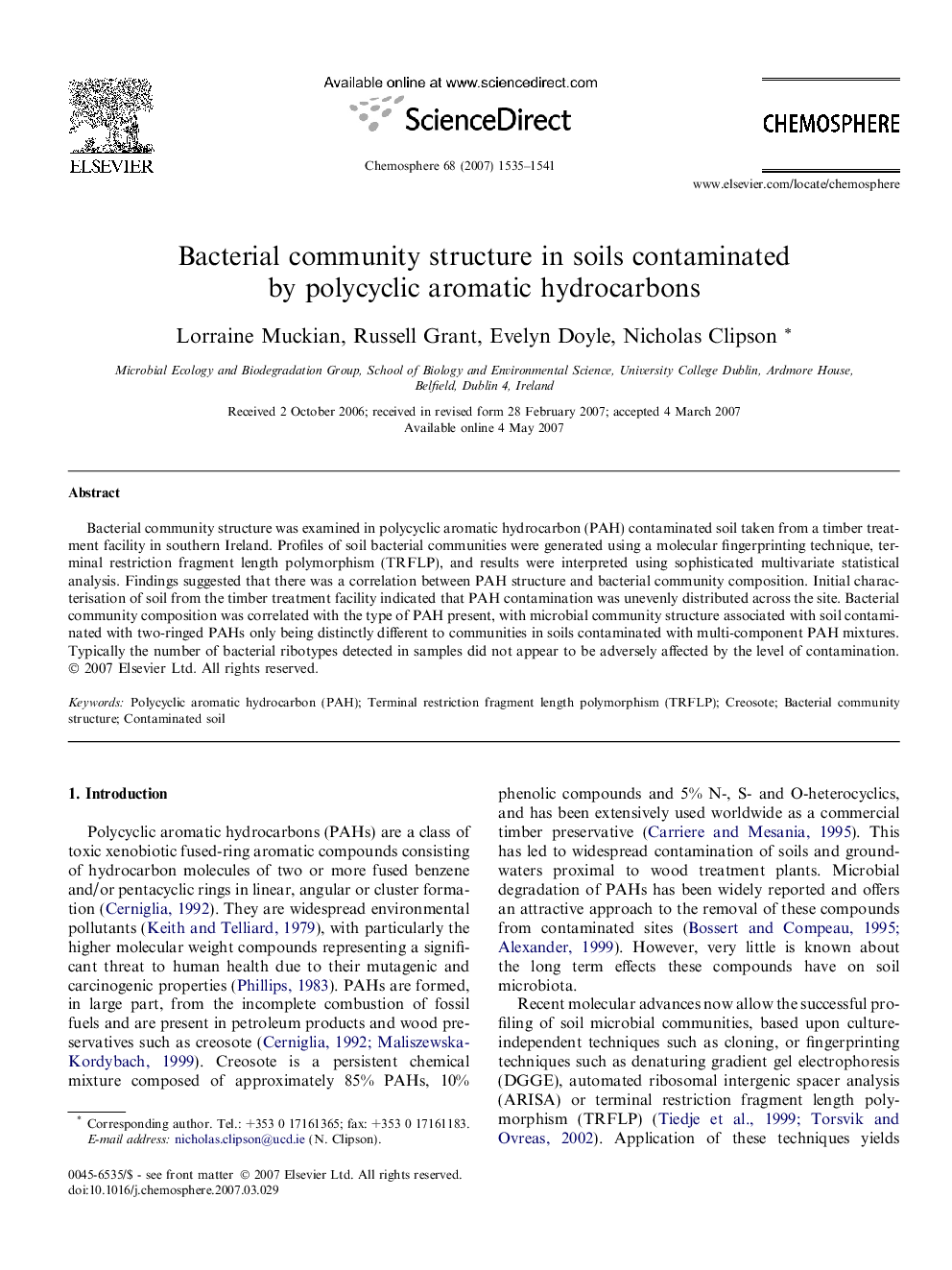| Article ID | Journal | Published Year | Pages | File Type |
|---|---|---|---|---|
| 4414880 | Chemosphere | 2007 | 7 Pages |
Bacterial community structure was examined in polycyclic aromatic hydrocarbon (PAH) contaminated soil taken from a timber treatment facility in southern Ireland. Profiles of soil bacterial communities were generated using a molecular fingerprinting technique, terminal restriction fragment length polymorphism (TRFLP), and results were interpreted using sophisticated multivariate statistical analysis. Findings suggested that there was a correlation between PAH structure and bacterial community composition. Initial characterisation of soil from the timber treatment facility indicated that PAH contamination was unevenly distributed across the site. Bacterial community composition was correlated with the type of PAH present, with microbial community structure associated with soil contaminated with two-ringed PAHs only being distinctly different to communities in soils contaminated with multi-component PAH mixtures. Typically the number of bacterial ribotypes detected in samples did not appear to be adversely affected by the level of contamination.
